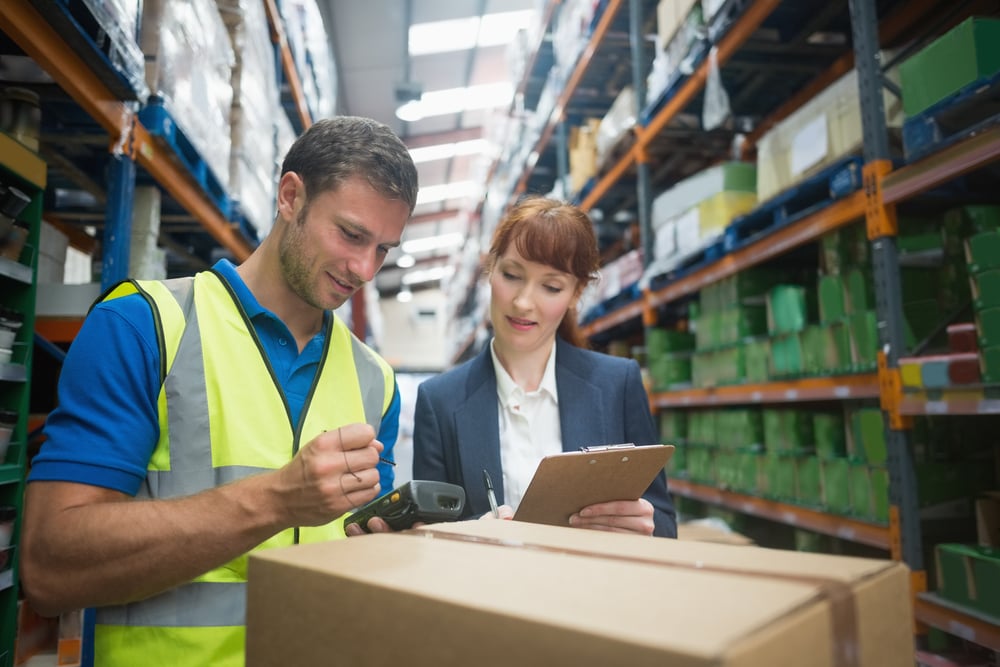
From automation and AI in baking to tightening compliance in plastics, this month’s headlines reveal how innovation and regulation are reshaping the manufacturing landscape. The snack industry is bracing for economic uncertainty, while Germany’s tech sector contends with a renewed chip shortage that could ripple through global supply chains. Meanwhile, advances in chemical packaging are setting new safety and sustainability standards across production lines. Here are five stories you may have missed in October that highlight the shifts shaping today’s bulk material industries.
Baking industry evolves through investments in automation, AI
At the recent International Baking Industry Exposition (IBIE 2025), bakery equipment suppliers showcased major technology upgrades, from high-flux ovens that replace traditional burners to fully automated dough-handling and rounding systems. These innovations aim to reduce labor, waste and cost while increasing throughput and flexibility. Meanwhile, leading companies are deploying AI across the value chain: one flour-mill engaged AI-powered NIR systems to analyse grain behaviour and saved around 15 % in storage and 2 % in operations.
The catch? Widespread AI adoption still faces hurdles: low margins, the cost of computing, and the need to build clean, reliable data sets before meaningful roll-outs. As one executive put it: the industry is “moving from art to science,” but it will proceed in “baby steps.”
Plastics Compliance Becomes a Business Imperative
According to Plastics Engineering, compliance with plastics-related regulation is no longer a back-office checkbox; it’s become a core competitive factor. For instance, UK firms now face heightened burdens such as the Plastic Packaging Tax (over £223 per tonne for packaging with less than 30 % recycled content) and upcoming Extended Producer Responsibility (EPR) rules that shift waste-management costs to producers. Globally, the challenge is amplified by the forecast that plastic waste will more than triple by 2060 (to over 1 billion tonnes annually), making regulatory risks material rather than hypothetical.
Investors and insurers are also leaning in: companies without robust compliance programmes are increasingly seen as liability risks, with higher borrowing costs and weaker investor confidence. Leading companies such as Unilever, Marks & Spencer and DS Smith are already redesigning packaging, scaling recycled-content use and eliminating plastics in high-volume items. They are turning compliance into a springboard for innovation rather than treating it as an afterthought.
Chip shortage intensifies in German industry, says Ifo
According to the ifo Institute’s October survey, the share of German manufacturers of electronic and optical products reporting input‐bottlenecks surged to 10.4%, up from 3.8% in April and 7.0% in July. The tightness is largely driven by global controls on rare earth elements, which are essential for semiconductors and sensors and are increasingly subject to trade restrictions, especially by China.
The concern: although the overall manufacturing sector only reports 5.5% of firms affected, the sharp rise in the high-tech segment is a red flag for growth and competitiveness. If the trend continues, the ifo Institute warns it could weigh noticeably on Germany’s economy.
Snack industry should brace for economic uncertainty
According to economist Robert Spendlove of Zions Bank, the snack industry is entering a phase of heightened risk driven by volatile tariffs, rising national debt, elevated home prices, a potentially cooling job market and the accelerating influence of AI. He noted that inconsistent economic data and shifts in household spending, particularly the gap between high-earning families and the rest in what’s described as a “K-shaped” recovery, make forecasting especially challenging for snack producers.
With consumers under pressure and business leaders navigating uncertainty, snack manufacturers are being urged to build agility and resilience into their supply chain and pricing strategies. As the environment grows less predictable, “know what the rate is, and I’ll figure it out,” is no longer sufficient. Spendlove emphasizes that having a clear line of sight into key input costs, trade policies and consumer trends is critical in this climate.
New Packaging Technologies Ensure Chemical Safety
In a recent piece, the Chemical Engineering magazine highlights how modern packaging solutions are becoming critical infrastructure in the chemical sector, not just a supporting function. Robotics, smart systems, and digital controls are being integrated into the packaging of chemicals and pharmaceuticals to safeguard personnel, preserve product integrity, and comply with stringent standards (e.g., cGMP, FDA, EU Annex 1). These systems address hazards such as dust-formation, explosion risk (ATEX compliance), moisture/contamination ingress, and the handling of viscous or finely divided substances.
Manufacturers are also under pressure from sustainability goals and cost-efficiency demands, which means packaging must balance durability and barrier performance with material reduction, recyclability, and reuse. As one expert puts it: the challenge “doesn’t lie in a single area,” but in balancing product integrity, operator safety, regulatory compliance and resource efficiency.


